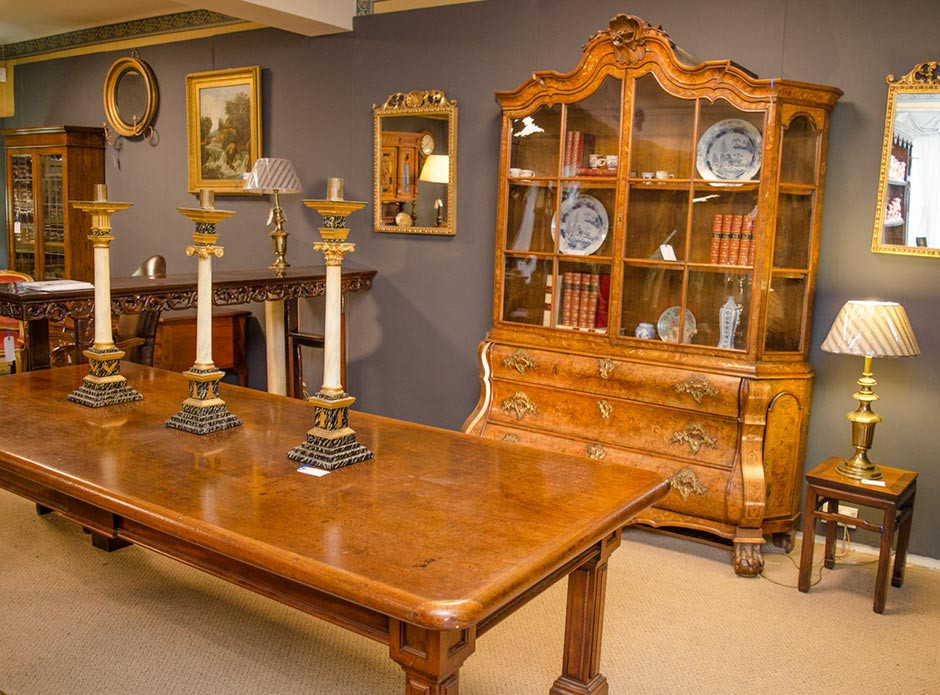
Many of our dealers ask us how to stage an antique pitch to sell more wares. It’s a good question. Plonking pieces everywhere doesn’t make for an effective shopper experience. Instead, you want a layout that’s easy to navigate, visuals that show off your personality and antique arrangements that inspire customers to bring objects into their own homes.
It doesn’t matter how impressive your inventory is - if you don’t know how to stage an antique pitch properly, you’ll miss out on sales. Whether you’re renting space at an antiques centre or setting up a stall at a fair, make a lasting impression and shift more stock with these tried-and-tested tips...
1. Find your style and stick with it
Your antiques pitch is an extension of your own personal brand. And brands need to be consistent. What works for the dealer selling vintage clothing two stalls down will not work for your collectable toy pitch. Having a clearly defined theme can be a big draw for customers, especially specialist collectors. Messy antique shops with a little bit of everything might be commonplace, but many shoppers take a swift exit. Make sure they know exactly what you’re selling and exactly what sets you apart from other dealers.
2. Group similar pieces together
When pitches are inundated with stock all over the place, it’s hard to take everything in - and it can be overwhelming. If you don’t know how to stage an antique pitch at all, a good place to start is by arranging similar antiques together. This presents a multitude of items the shopper is interested in conveniently, meaning they don’t have to trawl through your inventory and are more likely to buy.
3. Allow customers to envision antiques in their homes
Knowing how to stage an antique pitch in a clean, clear fashion is a great start. But getting creative with your stock - presenting it similarly to the way pieces can be styled in the home - is even better. Arranging objects into vignettes is perfect when you’re renting a smaller space. Display antiques in a shabby-chic cabinet, on wooden shelves, crates or chairs. If you’re wondering how to sell your antique furniture, you’d be surprised how many pieces you have up for sale can be used for display purposes as well. Two birds, one stone.
4. Think sensory
Visual merchandisers are experts in creating shopping environments that encourage sales. What is the atmosphere in your pitch like? If things are feeling a bit stale, throw in some faux foliage, twinkly lights, or charming bunting for a pop of colour. You’ll be surprised how much ordinary items can come to life with cheap props. Evoke nostalgia or contentment that will make shoppers feel more at home browsing your stock.
5. Choose the right place, with the right people
Maybe even more important than the pitch itself, is where you set it up. Research different centres, fairs and attractions you could potentially sell at, paying close attention to how much they charge to rent antiques space, location, atmosphere, staff, and how the venue promotes and advertises for its dealers. You’ll soon get a feel for places and events that are an organic fit for your business.
At Hemswell Antique Centres, our dealers have the advantage of showcasing their stock to the general public (who often come here for a day out browsing our treasures, then stay for a bit of tea and cake), as well as private and trade clients across the world. Our uniformed staff are highly professional: simply set up your pitch or stall and they’ll sell your antiques for you. Delivery and logistics are all arranged by us at no extra cost to our dealers. Not only that we are extremely proactive on our social media platforms generating positive interaction between the centres and our customers. Every dealer who joins Hemswell Antique Centres is given the opportunity to join our online selling experience and becoming a part of our high-ranking website - get in touch for a chat about leasing a pitch and see how we can help you develop your business.